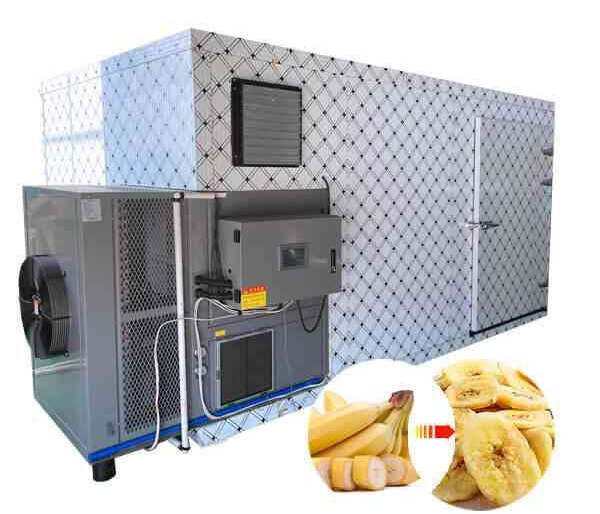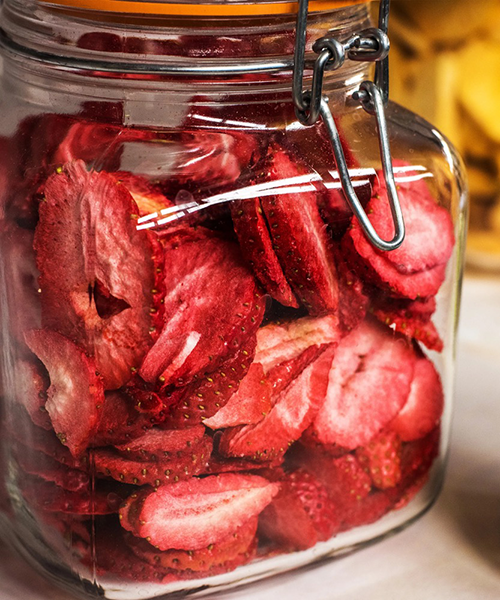
Content Menu
● Benefits of Using a Food Dehydrator
● What Can You Make with a Food Dehydrator?
>> 1. Dried Fruits
>> 2. Vegetable Chips
>> 3. Jerky
>> 4. Herbs and Spices
>> 5. Fruit Leather
>> 6. Yogurt
>> 7. Snacks for Camping or Hiking
● Creative Recipes Using Your Food Dehydrator
>> 1. Sun-Dried Tomatoes
>> 2. Pumpkin Pie Leather Roll-Ups
>> 3. Candied Watermelon Fruit Strips
>> 4. Dried Peppers
>> 5. Potato Bark
● Tips for Using Your Food Dehydrator
● Conclusion
● FAQs
>> 1. What types of fruits can I dehydrate?
>> 2. How long does it take to dehydrate foods?
>> 3. Can I dehydrate vegetables?
>> 4. Is it safe to dehydrate meat?
>> 5. How do I know when my food is fully dehydrated?
● Citations:
Food dehydrators are versatile kitchen appliances that allow you to preserve food by removing moisture, which inhibits the growth of bacteria and mold. This process not only extends the shelf life of various foods but also concentrates their flavors, making them a delightful addition to your culinary repertoire. In this article, we will explore a wide range of foods you can make with a food dehydrator, along with tips, recipes, and the benefits of using this handy device.

Benefits of Using a Food Dehydrator
Using a food dehydrator comes with numerous advantages:
- Extended Shelf Life: Dehydrating foods significantly prolongs their shelf life by preventing spoilage.
- Nutrient Retention: Unlike some preservation methods, dehydration retains most vitamins and minerals in food.
- Cost-Effective: Making your own dried snacks at home is often cheaper than purchasing commercial products.
- Healthy Snack Options: You can create nutritious snacks without preservatives or added sugars.
- Versatile Use: Dehydrators can be used for fruits, vegetables, herbs, meats, and even for making yogurt.
- Space-Saving Storage: Dried food takes up significantly less space than fresh or frozen alternatives.
- Eco-Friendly Preservation: Using an electrical food dehydrator machine reduces food waste by enabling you to preserve excess produce.
What Can You Make with a Food Dehydrator?
The possibilities are nearly endless when it comes to using a food dehydrator. Here are some popular options:
1. Dried Fruits
Dried fruits are among the most common items made in a dehydrator. They make for healthy snacks and can be used in various recipes.
- Apple Chips: Slice apples thinly, sprinkle with cinnamon if desired, and dehydrate until crispy. These chips are perfect for snacking or adding to granola.
- Banana Chips: Cut bananas into thin slices and dehydrate for a sweet snack. They can be enjoyed alone or mixed into cereals.
- Mango Slices: Peel and slice mangoes before dehydrating them for a tropical treat that's rich in vitamins A and C.
- Homemade Raisins: Simply dehydrate grapes to create sweet and chewy raisins that are great in baking or as a snack on their own.
2. Vegetable Chips
Vegetable chips are a crunchy alternative to traditional snacks.
- Kale Chips: Toss kale leaves with olive oil and seasonings before dehydrating until crispy. They are a nutritious snack loaded with vitamins K and C.
- Carrot Chips: Thinly slice carrots and dehydrate for a sweet, crunchy snack that's rich in beta carotene.
- Zucchini Chips: Slice zucchini, season, and dehydrate for a low-calorie snack option that's perfect for dipping in hummus or salsa.
- Crispy Green Bean Chips: Dehydrate green beans for an unexpected crunchy treat that's high in fiber.
3. Jerky
Making jerky at home is simple and allows you to control the ingredients.
- Beef Jerky: Marinate strips of beef in your favorite sauce (like teriyaki or barbecue) and dehydrate until chewy. This protein-packed snack is great for on-the-go energy.
- Turkey Jerky: Use ground turkey mixed with spices to create your own turkey jerky. It's leaner than beef jerky but just as delicious.
- Salmon Jerky: For seafood lovers, marinating salmon fillets before dehydrating creates a flavorful jerky that's rich in omega-3 fatty acids.
4. Herbs and Spices
Drying herbs enhances their flavor and makes them easy to store.
- Basil: Dehydrate fresh basil leaves to use in cooking throughout the year. Dried basil retains its flavor well and can be used in sauces and dressings.
- Thyme: Dry thyme sprigs for seasoning meats and vegetables. It adds depth to dishes like roasted chicken or vegetable stews.
5. Fruit Leather
Fruit leather is a fun way to use up excess fruit.
- Homemade Fruit Roll-Ups: Blend fruit puree (such as strawberries or peaches) with a bit of sugar or honey, spread it on dehydrator sheets, and dry until pliable. This makes for a great snack for kids!

6. Yogurt
You can make yogurt using your dehydrator by maintaining a low temperature for fermentation.
- Homemade Yogurt: Use milk and yogurt starter culture; keep it in the dehydrator until set. This method creates creamy yogurt without the need for an expensive yogurt maker.
7. Snacks for Camping or Hiking
Dehydrated foods are lightweight and easy to pack for outdoor adventures.
- Trail Mix Ingredients: Dehydrate fruits like apples or bananas to add to your trail mix along with nuts for an energy-packed snack while hiking.
- Instant Soups: Dehydrate vegetables like carrots, onions, and celery for quick soup preparation on the go. Just add hot water when you're ready to eat!
Creative Recipes Using Your Food Dehydrator
In addition to the basic items mentioned above, there are many creative recipes you can try:
1. Sun-Dried Tomatoes
Sun-dried tomatoes can elevate many dishes from pasta to salads. Simply slice fresh tomatoes in half, sprinkle with salt, and dehydrate until they reach your desired texture.
2. Pumpkin Pie Leather Roll-Ups
For fall lovers, pumpkin pie leather roll-ups can be made by blending pumpkin puree with spices like cinnamon and nutmeg before dehydrating into chewy snacks reminiscent of pumpkin pie filling[1].
3. Candied Watermelon Fruit Strips
Slice watermelon into thin strips, coat them lightly with honey or agave syrup mixed with lemon juice before dehydrating them into sweet candy-like strips[1].
4. Dried Peppers
Dried peppers such as jalapeños or bell peppers can add flavor to soups or stews later on. Simply slice them up and dehydrate until fully dried[1].
5. Potato Bark
For something different, try making potato bark by blending boiled potatoes with broth until smooth, spreading it out on trays, and dehydrating it into crispy sheets that can be rehydrated later[5].
Tips for Using Your Food Dehydrator
To get the best results from your food dehydrator:
- Slice Evenly: Ensure that all food items are sliced uniformly to promote even drying.
- Use Fresh Ingredients: Always start with fresh produce for optimal flavor and nutrition.
- Rotate Trays: If your dehydrator does not have an automatic fan, rotate trays halfway through drying to ensure even results.
- Store Properly: Store dried foods in airtight containers in a cool, dark place to maintain freshness.
- Check Moisture Levels: To ensure proper dehydration, place dried items in glass jars; if condensation forms inside the jar after sealing it, return the items to the dehydrator[4].
Conclusion
A food dehydrator opens up a world of culinary possibilities. From creating healthy snacks like fruit chips and jerky to preserving herbs and making yogurt, the uses are vast and varied. Not only does it help reduce food waste by allowing you to preserve excess produce, but it also provides healthier alternatives to store-bought snacks. Investing in a food dehydrator can be beneficial for both your health and your wallet.

FAQs
1. What types of fruits can I dehydrate?
You can dehydrate almost any fruit including apples, bananas, mangoes, strawberries, peaches, and pears.
2. How long does it take to dehydrate foods?
Dehydration times vary based on the type of food being dried; fruits may take anywhere from 6 to 12 hours while meats may take longer depending on thickness.
3. Can I dehydrate vegetables?
Yes! Common vegetables for dehydration include carrots, zucchini, bell peppers, tomatoes, and leafy greens like kale.
4. Is it safe to dehydrate meat?
Yes, as long as you follow proper marinating techniques and ensure that the meat reaches an appropriate temperature during dehydration to kill bacteria.
5. How do I know when my food is fully dehydrated?
Food should be dry but still flexible; there should be no moisture left inside. For fruits like apples or bananas, they should be leathery; for vegetables like kale or zucchini chips, they should be crisp or brittle depending on the type.
Citations:
[1] https://cottageatthecrossroads.com/dehydrator-recipes/
[2] https://www.commercialdehydrators.com.au/dehydrating-recipes-filters
[3] https://etsolutions.in/10-amazing-benefits-of-electrical-food-dehydrator-machines/
[4] https://vacuumsealersunlimited.com/how-to-use-a-food-dehydrator/
[5] https://www.backpackingchef.com/food-dehydrator-recipes.html
[6] https://www.reddit.com/r/dehydrating/comments/106m6e4/what_are_things_you_commonly_eat_using_your/
[7] https://www.webmd.com/diet/dehydrating-food-good-for-you
[8] https://www.youtube.com/watch?v=lEUA2t2XD5M
[9] https://www.callmelore.com/fool-proof-healthy-dehydrator-recipes/
[10] https://www.bestbuy.com/discover-learn/10-reasons-to-buy-a-food-dehydrator/pcmcat1634332391134











